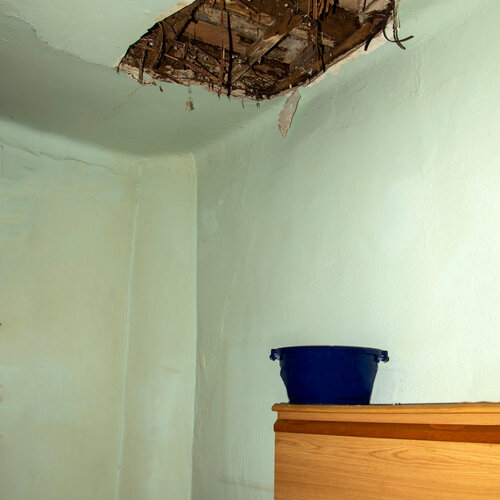
Dealing With Roofing Emergencies
The weather in Tennessee can change at the drop of a pen. It will go from a clear, beautiful day where you can see the mountaintops forever to a rainy day where you can only see the front of your car. Then, of course, there is the snow that can cover those beautiful mountaintops. Anywhere between the rain and the snow, there is an increase in emergency roofing services.
So, when it comes to calling for emergency roofing services, what is considered an emergency roof repair? Well, a missing shingle or shingle out of place is not going to qualify for emergency roofing services. Is a leaking ceiling an emergency? Yes – and some leaks are more of an emergency than others. But a leaking roof calls for a need for emergency roofing services, even if it’s only a small leak.
Why Roofing Issues Can’t Be Ignored
If a tree has landed on top of your house, that is undeniably a roof leak. But it is those small leaks that too many people will put to the side and deal with later that can cause a lot of problems. Water is the enemy of a house. Even the smallest leaking roof is causing damage and the longer you let that leak go, the more damage will happen. So, no matter how small the leak may seem, it constitutes the need for emergency roofing services – maybe not as quick as a tree coming through the roof, but still an emergency.
Is a hole in the roof an emergency?
Absolutely! If you can see outside through your roof, you need emergency roofing services ASAP, especially if it is raining or snowing, or you’re experiencing any kind of unpleasant weather. Hailstorms and high winds are not a time to have a roof open to the elements, not to mention the critters and insects that get into your home.
What do you do in a roofing emergency?
When you have an emergency roof leak, who to call is important to know ahead of time. Yes, you’ll want to call your insurance company, but the first call needs to be an emergency roofing services contractor. They can repair your roof – the insurance can’t. The contractor will perform an emergency roof inspection and determine the extent of the damage and what needs to be done.
Unless there is widespread damage in your area needing emergency roofing services, they can usually be there within an hour if your roof is gone. If it is a smaller leak, it may be 24 hours. Once you have contacted emergency roofing services, then contact your insurance company. They will send an adjuster out to inspect the roof and determine if it is a valid homeowner’s insurance claim.
In the meantime, while you’re waiting on emergency roofing services to arrive, if it is pouring down rain or other elements are entering your home, you should know how to make emergency roof repairs and have materials on hand. Just like band-aids and peroxide for emergency human cuts, you should have these materials on hand in case your home has an emergency leak.
A few items you should have on hand for an emergency roof leak are:
- A bucket
- An emergency roof tarp
- An emergency roof sealer
- 2 x 4 boards
- 4×8 plywood
- Galvanized roofing nails
When you have a roof leak, you want to stop the water from coming in as quickly as possible. You also need to move anything out of the way of the leak like furniture and electronics. Place towels under the leak and place a bucket on the towel.
Then, with a nail or screwdriver, poke a hole in the ceiling if it is bulging. This will allow any built up water to run out to relieve the stress. Watch the bucket and empty it every so often so it doesn’t overflow. Next, on the roof, stretch the roof tarp out and nail the 2×4 boards on top of the tarp around the hole. Use the roof sealer to seal the edges of the tarp.
If the hole is small enough, you can place any extra roofing shingles over the hole, nail into place and then apply the roofing sealant around the edges of the shingles.
On the inside, with everything out of the way that could be damaged by the rain, take a piece of plywood, and spread roofing sealant around the board so that it will fit flat to the ceiling. After that, nail the board in place.
This won’t look aesthetically pleasing, but your homeowner’s insurance should cover having the ceiling, walls, and flooring repaired as well as the roof itself. Keep in mind that insurance policies are not all the same, so it is better now to know what is covered before you need it.

A Few Words of Advice
When your insurance adjuster schedules their appointment with you, try to have the emergency roofing services representative present. They are on your side and will point out any issues that the adjuster may overlook. While adjusters are trained on roofing matters, they are protecting the company’s money.